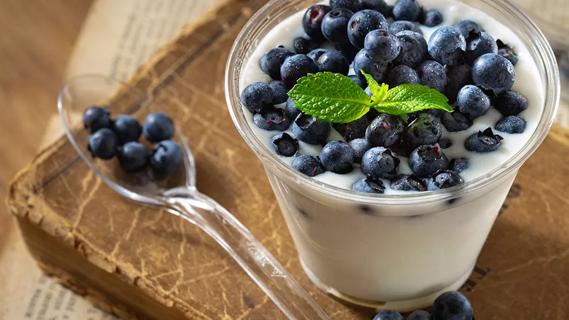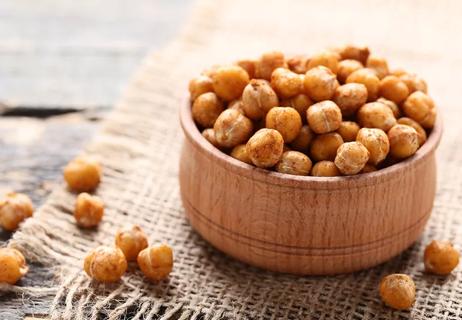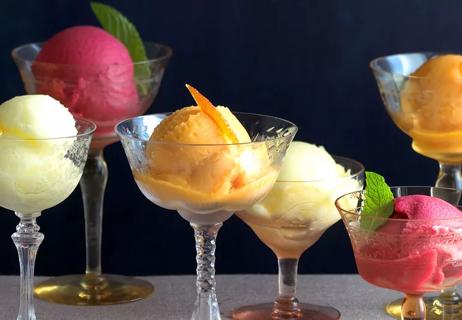This color additive, found in many pre-packaged foods, may affect people with ADHD or allergies

That bowl of fruity-looking cereal, those bright-colored candies, that rainbow-frosted cake for your birthday … they’re all likely made with synthetic (human-made) dyes. These food additives are commonly used to give foods their bright colors.
Advertisement
Cleveland Clinic is a non-profit academic medical center. Advertising on our site helps support our mission. We do not endorse non-Cleveland Clinic products or services. Policy
Lately, all synthetic food dyes have been under scrutiny for their possible health risks. And one of them — Allura Red AC, commonly known as red dye 40 — is a particular source of concern.
So, what do you need to know?
Registered dietitian Julia Zumpano, RD, LD, highlights the potential risks associated with foods containing red dye 40 and how to minimize them.
“Like other synthetic dyes, red dye 40 is derived from petroleum,” Zumpano explains. “That means humans make it, using a chemical process that starts with crude oil.”
Crude oil is the type of raw, unrefined oil that is found underground in nature. But if you’re thinking, “Wait, isn’t that gasoline?” the answer is: Not really.
While it’s true that crude oil is the basis for other products (including gasoline and jet fuel), those are made using a very different chemical process.
Synthetic dyes like red dye 40 are tested for contaminants, and the U.S. Food and Drug Administration (FDA) has historically deemed them safe for humans to consume. But in recent years, that’s started to change.
Some countries have very strict regulations on how red dye 40 can be used, and some U.S. states have regulated it, too. But under U.S. federal law, it’s currently still used in a variety of products.
Advertisement
But that may end soon. In April 2025, the FDA announced that it would take steps to phase out the use of red dye 40 and several other synthetic dyes by the end of 2026.
This news came on the heels of a January 2025 announcement that the FDA had banned the use of red dye 3, calling for it to be removed from food and drinks by 2027 and from medications by 2028.
“Red dye 40 is usually used along with other food additives,” Zumpano reports. “That makes it hard to pinpoint exactly which dye is associated with certain symptoms.” Still, she explains some of the possible side effects linked to red dye 40.
In kids who have attention-deficit/hyperactivity disorder (ADHD), red dye 40 is thought to be associated with hyperactivity and behavioral changes, like irritability and depression. That doesn’t mean that red dye 40 causes ADHD. It means that kids who have ADHD may be especially sensitive to the dye.
If your child has been diagnosed with ADHD, Zumpano says you can try removing dyes, including red dye 40, from their diet for a week or two to see how their bodies respond.
“You may notice an improvement in behavior,” she notes. “But you also might not realize how their diet has been affecting them until you begin to reintroduce foods and see their reactions.”
If you’re sensitive to red dye 40, it can trigger your body to release histamine, a chemical that plays a role in allergy symptoms. You may experience:
If you suspect you might have an intolerance to red dye 40, Zumpano recommends cutting it out of your diet for a bit to see if your symptoms subside.
For a long time, red dye 40 was considered a healthier alternative to other dyes, which were shown to have strong links to cancer. But red dye 40 has some links of its own. For instance, it contains p-Cresidine, which is thought to be a carcinogen — that is, a cancer-causing substance.
It also contains trace amounts of benzene, a known carcinogen. Though benzene itself isn’t added to red dye 40, it can be created as a byproduct of the process of making it. Some studies say the small amount of benzene in the dye doesn’t pose a risk, but the science isn’t yet clear.
In some lab studies, researchers found that consuming high doses of food dyes was associated with tumor growth. But as Zumpano points out, “It can be hard to translate what that means in humans.”
Packaged, processed foods almost always contain synthetic food dyes — and red dye 40 is one of the most frequently used. On food labels, you may also see it listed as:
Advertisement
Foods that commonly include red dye 40 include:
“It’s important to note that on food labels, ingredients are listed by weight,” Zumpano says. “So, a food that lists red dye 40 last has less of it than a food that lists it second or third.”
Also of note: Many children’s medications (think liquid cough syrups or chewable tablets) can also contain food dyes. But dye-free versions are becoming popular and widely available.
When possible, Zumpano encourages steering clear of dyes to avoid any risks or unwanted reactions.
“I recommend minimizing food dyes, especially in kids’ diets,” she says. “And if there’s a cancer risk in your family, I encourage you to be even more vigilant in avoiding artificial dyes.”
But how exactly can you avoid ingredients that are still in so many products?
“The key to avoiding synthetic dyes is to read food labels, take note of the foods you usually purchase that have dye in them and find a dye-free alternative,” she advises. “Look for foods that use natural food coloring from fruit and vegetable extracts.”
Advertisement
You can also use these alternatives to red dye in your own cooking and baking:
“Let’s say you’re making cupcakes for your child’s school bake sale fundraiser,” Zumpano poses. “Rather than using colorful frosting from the store, you could make your own frosting from scratch and dye it with food sources — or stick to chocolate or buttercream.”
Don’t feel like bothering with beet powder or other natural dyes? Switch gears where you can. For that hypothetical bake sale example, you could turn to chocolate chip cookies or snickerdoodles — something you don’t need to frost at all.
In general, it’s best to avoid giving kids ultra-processed foods for as long as possible.
“Once these foods have been introduced, it can be hard to get kids off them,” Zumpano notes. “If you can’t avoid them entirely, limit them to times that are difficult for you to control, like friends’ birthday parties.”
Then, she says, when your kids do encounter foods with dyes, take the opportunity to talk to them about brightly colored foods and other types of healthy nutrition choices — like choosing apple juice or fizzy water over soda at that same birthday party.
Advertisement
And one last thing: “Always do your best to model good behavior when you’re around your kids,” Zumpano encourages. “They watch everything you do, so your actions are the best lessons.”
Learn more about our editorial process.
Advertisement

This decadent treat may help improve your heart health and boost your mood

With a little planning, you can fill your belly and boost your energy

Snacking can bring benefits with healthy food choices and planning

Plan ahead, bring a cooler when possible and don’t forget the water!

These foods sabotage weight loss and rob you of rest

A closer look at what's inside your favorite candy

These foods will nourish your body without ruining your diet

Get the scoop on alternatives to regular and premium ice cream

The best parenting style balances enforcing rules and showing plenty of love

Tips include cutting back on sugar, focusing on exercise and managing stress

It can be harder to let go when you’ve invested time, energy and emotions — but it might be the healthier choice long term